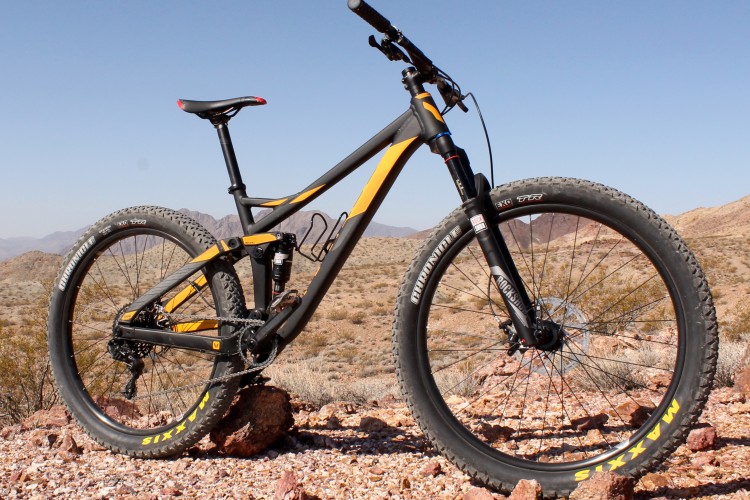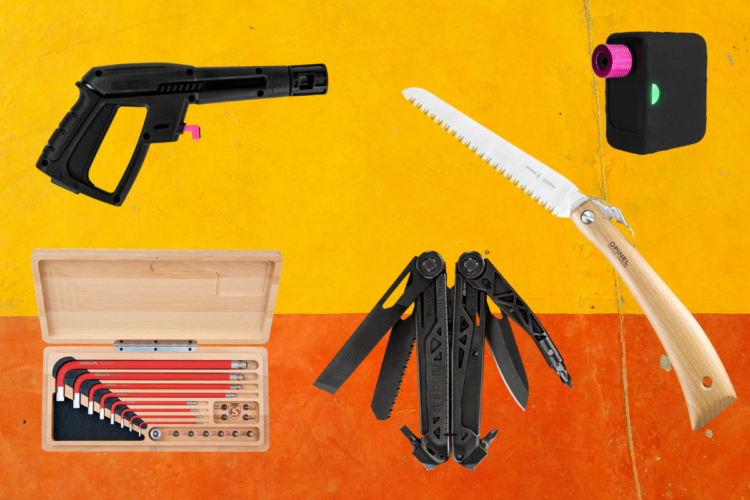
Rocky Mountain recently launched a brand new 27.5+ bike called the Pipeline, and at Sea Otter last week I got a chance to take one out for a quick test ride. While the trails at Fort Ord offer up little in the way of technical terrain, I was stoked to get a feel for what this hotly-anticipated bike feels like in the flesh.
This “aggressive trail” bike sports 150mm of travel up front and 130mm of travel in the rear, along with the ability to run up to 3.25-inch-wide 27.5″ tires. The bike features a carbon front triangle and aluminum alloy rear, internal cable routing, and of course, Boost 148 spacing in the rear.

The new Pipeline, like other new bikes in the Rocky Mountain line, features something the company calls the “Ride-9 System” that allows the rider to tweak the bike’s geometry to get the ride quality he or she is looking for. There are 9 positions to choose from, taking the geometry from a slack 67.2° head tube angle all the way up to a steeper 68.8° angle. This allows heavier or lighter riders to utilize different settings and also offers the ability to tune for the terrain (climbing efficiency vs. aggressive handling). Note that unlike similar “chip” systems being marketed by other brands, Ride-9 has nothing to do with adapting this plus bike to run standard 29er wheels. This is a dedicated 27.5+ rig.
I tested the 770 MSL Pipeline, which is the top-of-the-line version, featuring an internally-routed Rock Shox Reverb dropper post, Shimano XT 1×11 drivetrain, XT brakes, 28T RaceFace Turbine crank, Fox 34 Float fork, and a Fox Float rear shock. The stock tires are Maxxis Rekon+ tires, which are very capable and aggressive tires, though only (cough, only) 2.8″ wide. Rocky Mountain claims the Pipeline can accommodate tires up to 3.25″ for those who want to get the full benefits of going wide.

Now, before sharing my ride impressions, I have to offer a disclaimer. which I’ll offer for all my Sea Otter test ride reviews this week. The trails at Fort Ord offer smooth singletrack at best, with a lot of trails that are actually just fire roads. So, I didn’t get a chance to throw any gnar at the Pipeline, but I did get a good feel for how well the bike handles, and also how efficiently it climbs.
My test rig tires were setup with about 18psi front and rear, and slashing down the oak-lined, sinuous singletrack, I could really appreciate how well the Pipeline handled. Sure, this was just “flow trail” stuff, but the Pipeline made pinning unfamiliar trails a breeze, right out of the box. I let off the brakes on the steepest fire road descents too, picking the most eroded lines I could find, and the suspension tracked even more confidently than I expected. That’s the thing about pairing ample front and rear suspension with a wide, aggressive tire: there’s very little that can trip up a bike like this. Loose rocks, big rocks, sand–none of that slows down the Pipeline.
Climbing with the Pipeline on singletrack was a breeze, thanks to the traction-loving plus tires and the efficient suspension design. The only time I noticed any sort of climbing-related pedal feedback was on pavement, and that was when I was dead tired at the end of the ride. The plus tires were definitely a bummer at that point as well, so the moral of the story is to keep the Pipeline where it belongs: on the trail!
Despite such a short test ride, I know the Rocky Mountain Pipeline is a bike I could really enjoy on our home trails in North Georgia. This is a trail bike as it should be designed: generous amounts of travel, aggressive and capable tires, and an efficient platform that seems to make climbs melt away like spring snow. Not only that, the Pipeline fits everything into a sleek, lightweight package.
The Rocky Mountain Pipeline is offered in two builds: the 750 MSL for $3,999 US and the 770 MSL (tested) for $4,799 US.




















0 Comments